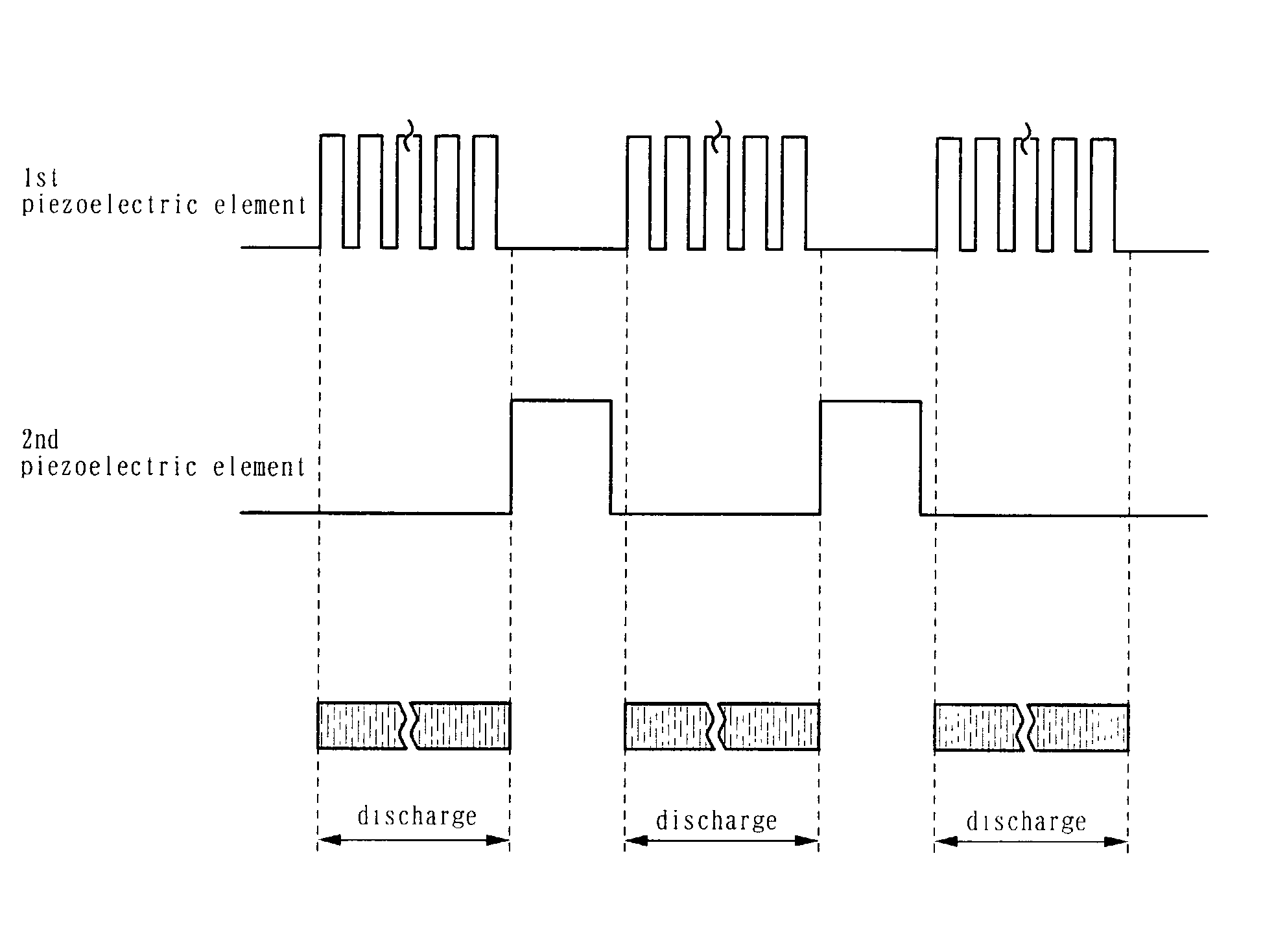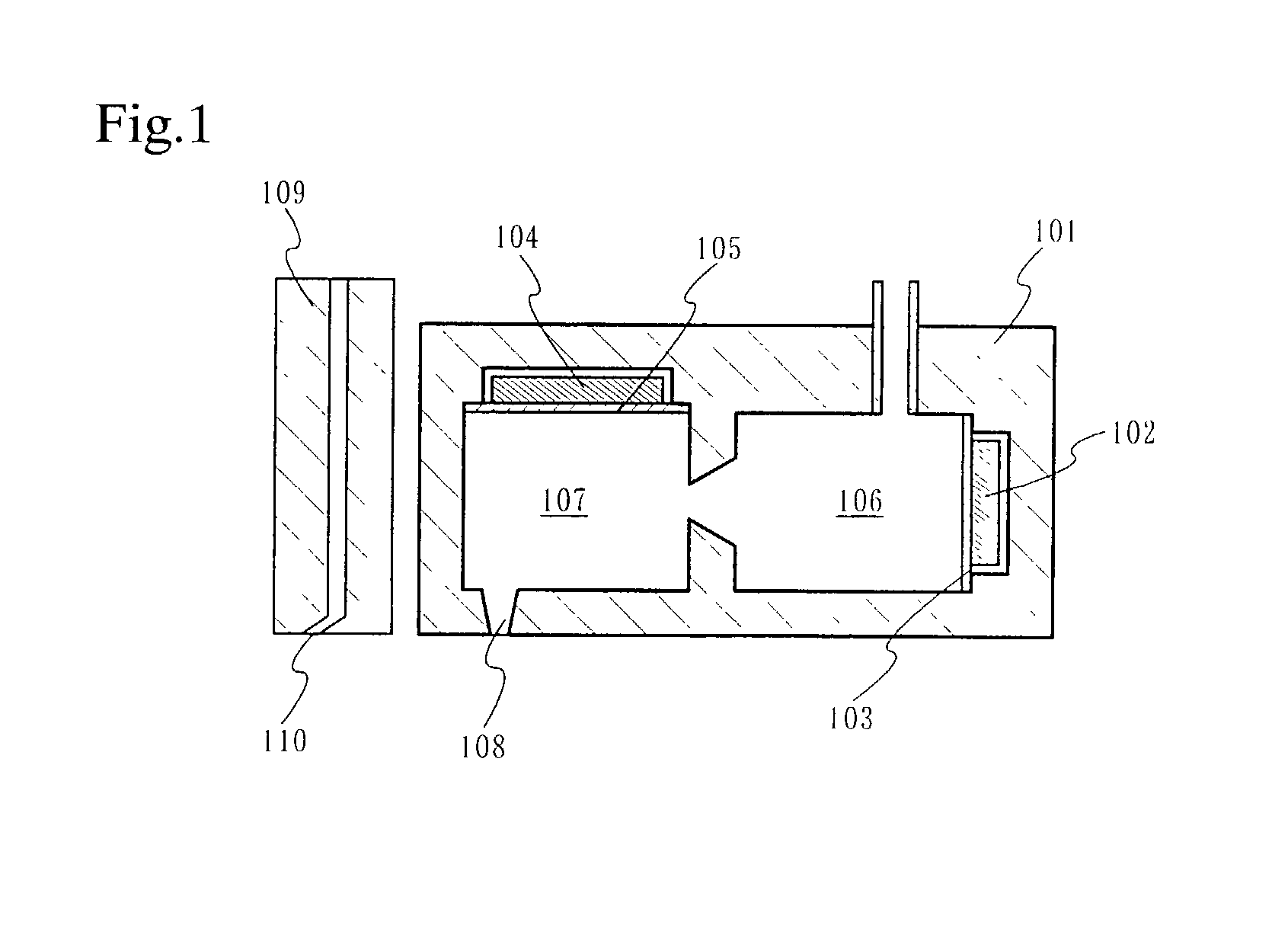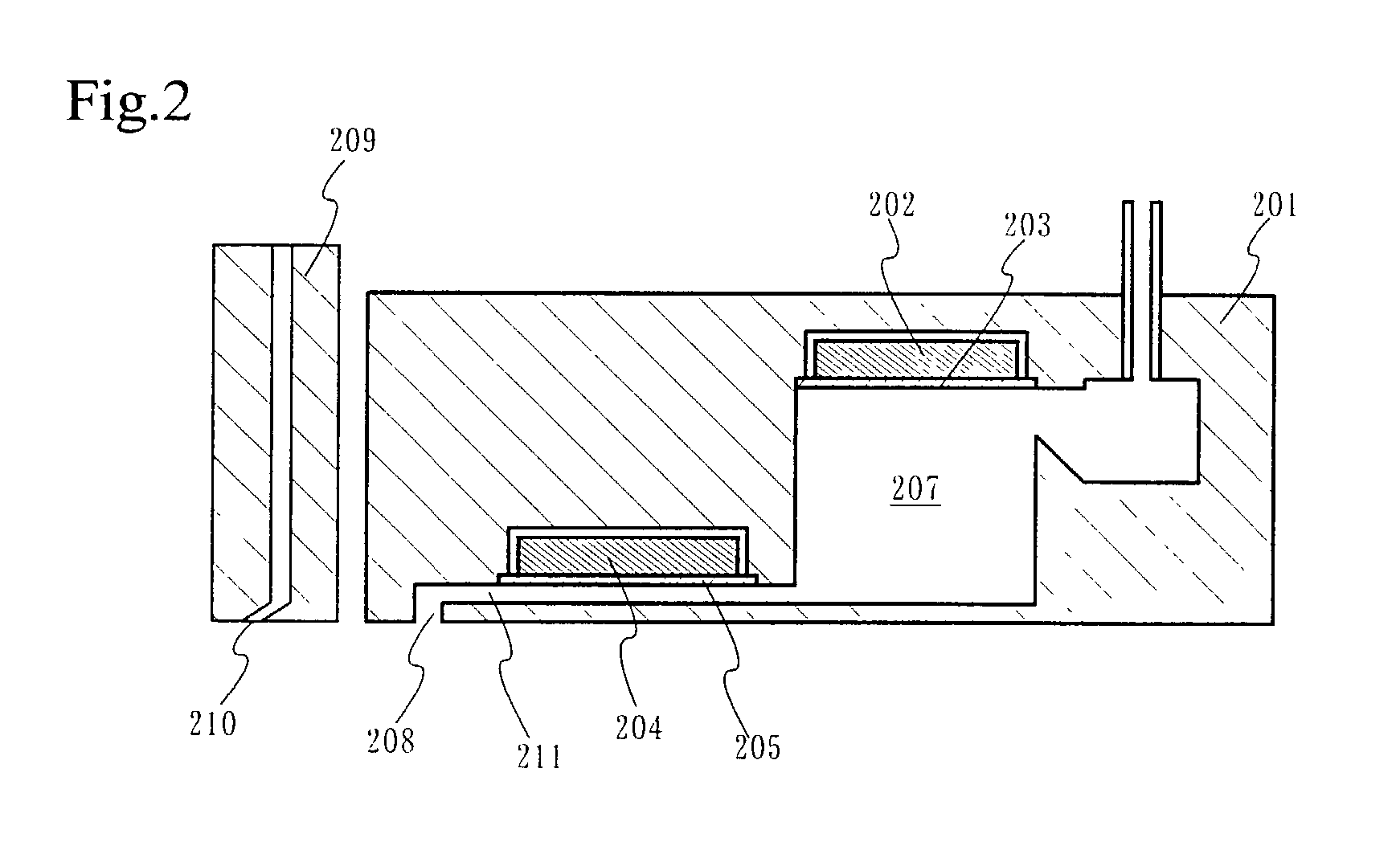Printing device and method of manufacturing a light emitting device
a printing device and light-emitting technology, which is applied in the direction of inking apparatus, identification means, instruments, etc., can solve the problems of loss, inability to heat-resistance or water-resistance organic compound layer formation, and loss of organic compound material that remains on the inner wall of the evaporation device and in the crucible of the evaporation source, so as to achieve increased printing speed and shorten the time for position control. , the effect o
- Summary
- Abstract
- Description
- Claims
- Application Information
AI Technical Summary
Benefits of technology
Problems solved by technology
Method used
Image
Examples
embodiment 1
[0048]FIG. 6 schematically shows a state that a polymer organic compound layer is formed so as to match with a pixel region on a substrate in which one electrode of an organic light emitting clement by using an ink jet printing device according to the present invention. In FIG. 6, reference numeral 610 indicates a substrate, and a pixel region 611, a source side driver circuit 612 and a gate side driver circuit 613 are formed by using TFTs on the substrate 610. The pixel region corresponds to the region surrounded by a plurality of source wirings connected to the source side driver circuit 612 and a plurality of gate wirings connected to the gate side driver circuit 613. A TFT and an organic light emitting element electrically connected with the TFT are formed in the pixel region. The pixel region 611 is defined as the above-described region in which pixels are arranged in matrix.
[0049]Here, reference symbol 614a indicates a mixture of an organic compound material for emitting red l...
embodiment 2
[0065]FIG. 7 schematically shows another example in which a polymer organic compound layer 614 is formed so as to correspond to a pixel region by using an ink jet printing device according to the present invention on a substrate on which one electrode of an organic light emitting element is formed. In FIG. 7, the same parts as those in FIG. 6 are indicated by the common reference numerals, and are not described here. FIG. 7 shows an embodiment in which application is conducted for each color, and one kind of the mixture is discharged from the ink head. In this case, the respective ink heads filled with the mixture for a red light emitting layer, the mixture for a green light emitting layer, and the mixture for a blue light emitting layer are provided, and application is conducted for each of the colors. Therefore, a thickness, a burning polymerization temperature in the later stage, and the like can be adjusted at the optimum level for each color.
embodiment 3
[0066]FIG. 8 shows an embodiment in which the printing device of the present invention is applied to a panel portion formed on a large-area substrate (mother glass substrate). On a mother glass substrate 800, panels 801a to 801f each including a pixel region with the same structure as that in FIG. 6 are formed. Although two ink heads 802a and 802b are shown in FIG. 8, the number of ink heads can be arbitrarily set. In the case where the mixture is applied continuously over the adjacent pixel regions, the first and second piezoelectric elements are incorporated into the ink head and the timings for causing displacement are synchronized, whereby the mixture can be discharged continuously or the discharge can be stopped instantaneously, as described using FIGS. 3A and 3B and FIG. 4. Accordingly, the organic compound layer can be formed at high speed with respect to the large-area substrate on which a large number of pixel regions are formed.
PUM
| Property | Measurement | Unit |
|---|---|---|
| depth | aaaaa | aaaaa |
| depth | aaaaa | aaaaa |
| size | aaaaa | aaaaa |
Abstract
Description
Claims
Application Information
 Login to View More
Login to View More - R&D
- Intellectual Property
- Life Sciences
- Materials
- Tech Scout
- Unparalleled Data Quality
- Higher Quality Content
- 60% Fewer Hallucinations
Browse by: Latest US Patents, China's latest patents, Technical Efficacy Thesaurus, Application Domain, Technology Topic, Popular Technical Reports.
© 2025 PatSnap. All rights reserved.Legal|Privacy policy|Modern Slavery Act Transparency Statement|Sitemap|About US| Contact US: help@patsnap.com



